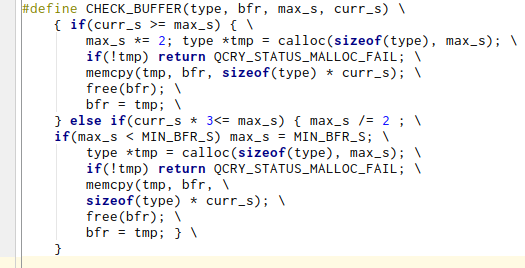It’s been almost a month since official coding started for Google Summer of Code 2016. And it’s definately been an interesting experience.
When I was told to write this article some sugestions for content were “pictures” and to “provide links to prototypes”. Unfortunately with my subject (especially at this point in time) that’s not as easily possible and I’m not sure how many of you want to see source code in the form of glorious macros in a blog post.

But I will try 🙂
Qaul.net is building it’s crypto on a small, embeddable crypto library maintained and mostly developed by ARM called “mbedtls”. Unfortunately the project just went through some massive refactoring and the API has completely changed. Thus a lot of documentation online is out of date or just plain out doesn’t work. Most of my time so far I’ve spend crawling through the source code of the library components I need and learning how they link together in the background to understand which files I need to compile into the project and which are optional. The goal here is to make the end binary and the memory footprint of qaul.net as small (and as embeddable) as possible.
Next up was the general structure of the crypto module. In libqaul I added a new folder and thus function/ field namespace called “qcry” which is short for Qaul CRYpto. Following is a quick graphic of the layout of the module.

All orange modules are part of the crypto-package, yellow modules show heavy modification to their code base where as grey modules will require very little modification. As you can see the crypto module is structured into five parts: Arbiter, Dispatcher, Context, Targets and Utilities. Following a quick description of what they do, if you’re interested in more in-depth documentation, check out my wiki.
- Arbiter: Provides abstraction layer to the rest of libqaul and handles “disputes” between different threads or application states.
- Dispatcher: Acts as a load balancer between the non-threadsafe functions of the crypto and the multithreaded environment of libqaul. Also optimises CPU overhead for context switching.
- Contexts: Contains raw data for crypto tasks (private keys, mode of operation, targets, etc..). Is created by the arbiter but most handled by the dispatcher.
- Targets: Contain data required for public key crypto. Mostly contains metadata and public keys of other users. Get created by the arbiter.
- Utilities: Base64 encodings, hash functions, verifications, creating user avatars, lots of stateless functions that are used throughout libqaul go here.
One thing I have started to work on too (but haven’t gotten far enough yet to show something off in the UI) is user verification. So…users have private keys and with the fingerprint of that key it is possible to tell if they really are who they say they are. But how to communicate that to users? Showing people a long number is very unintuitive and will just cause people not to care.
So instead of a longer number (or maybe additionally), on a new user profile screen we will show an image generated from the username of the person, their fingerprint and a signature (public key encrypted with private key). This way users will be able to quickly see if the person they are talking to is who they say they are.
To do so there are several libraries:
– https://github.com/Ansa89/identicon-c
– https://github.com/stewartlord/identicon.js
– https://github.com/spacekookie/librobohash (My C re-implementation of https://robohash.org)
Which of these solutions will be used is not clear yet (Personally I like robots, who doesn’t like robots?  ). But that should give you an idea of what is to come in the UI department.
). But that should give you an idea of what is to come in the UI department.
Coming up in the next week is the arbiter and a rudimentary dispatcher. The arbiter needs to be hooked into the rest of libqaul and provide access to all the low level functions the crypto module provides. From there on out test with the rest of qaul.net can be conducted.
I hope I didn’t ramble on for too long. And I’m looking forward to the next few weeks of coding.
Cheers,
spacekookie